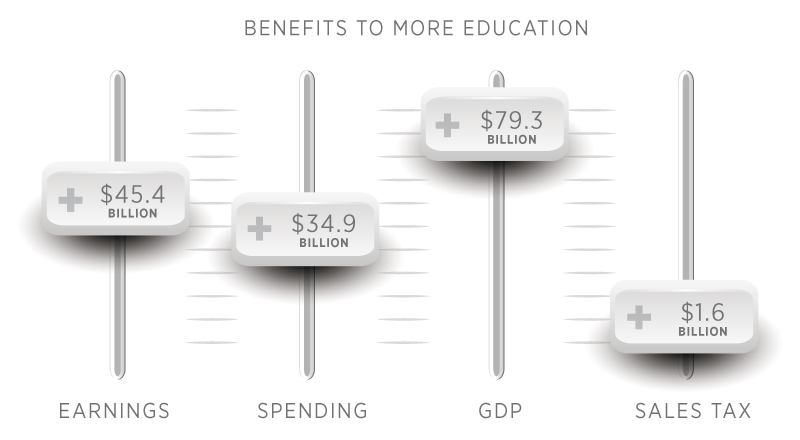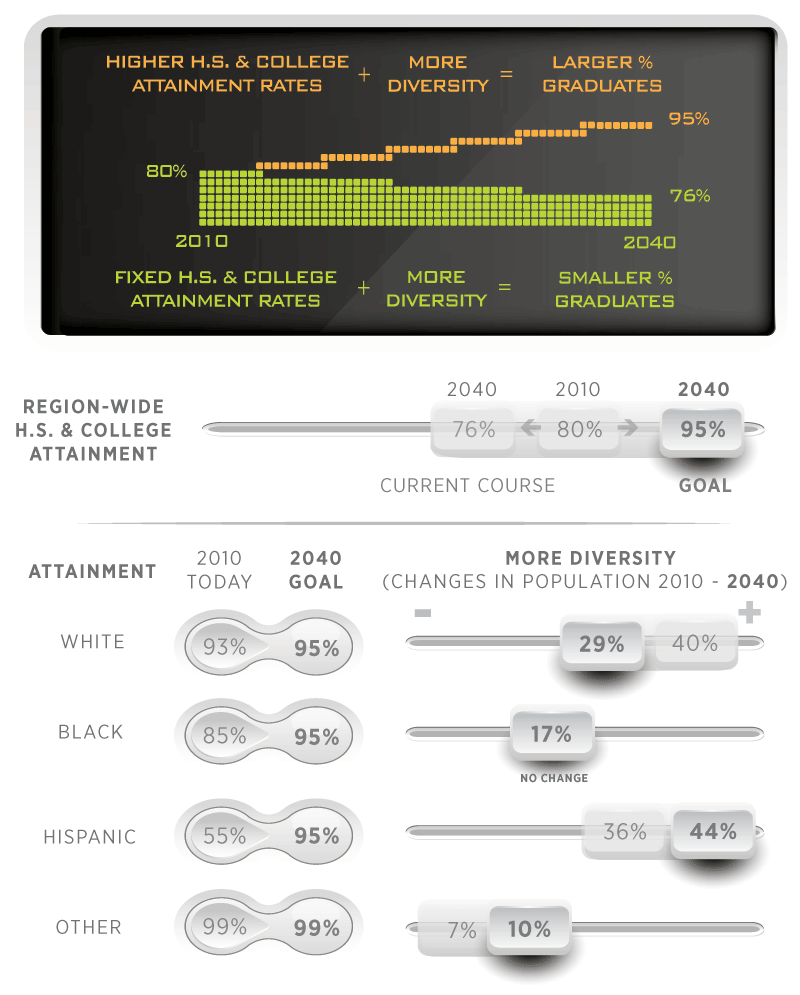Competitive Workforce
The Competitive Workforce alternative increases educational attainment for residents, thus improving the regional economy.
Increasing educational attainment
In this alternative, the region makes a major effort to increase the educational achievement of its residents. Improving high school graduation rates, particularly in low-income communities where dropout rates are high, becomes a priority.
The focus is not only on improving schools, but also addressing community factors such as poverty, crime, and substandard housing that can negatively affect educational outcomes.
These efforts are coordinated with increased educational enrichment, including pre-school, after-school tutoring and mentoring, and English-language skills programs. Additionally, improved opportunities for vocational training, adult education, and counseling and support for small business owners are provided throughout the region.
These initiatives require a substantial taxpayer investment, but also receive major support from the private sector and non-profit organizations. Costs to the public are offset by major increases in the earning power of residents, strengthening of the local tax base, and the economic development benefits of having a highly-skilled work force.
Click here to see the survey results.




